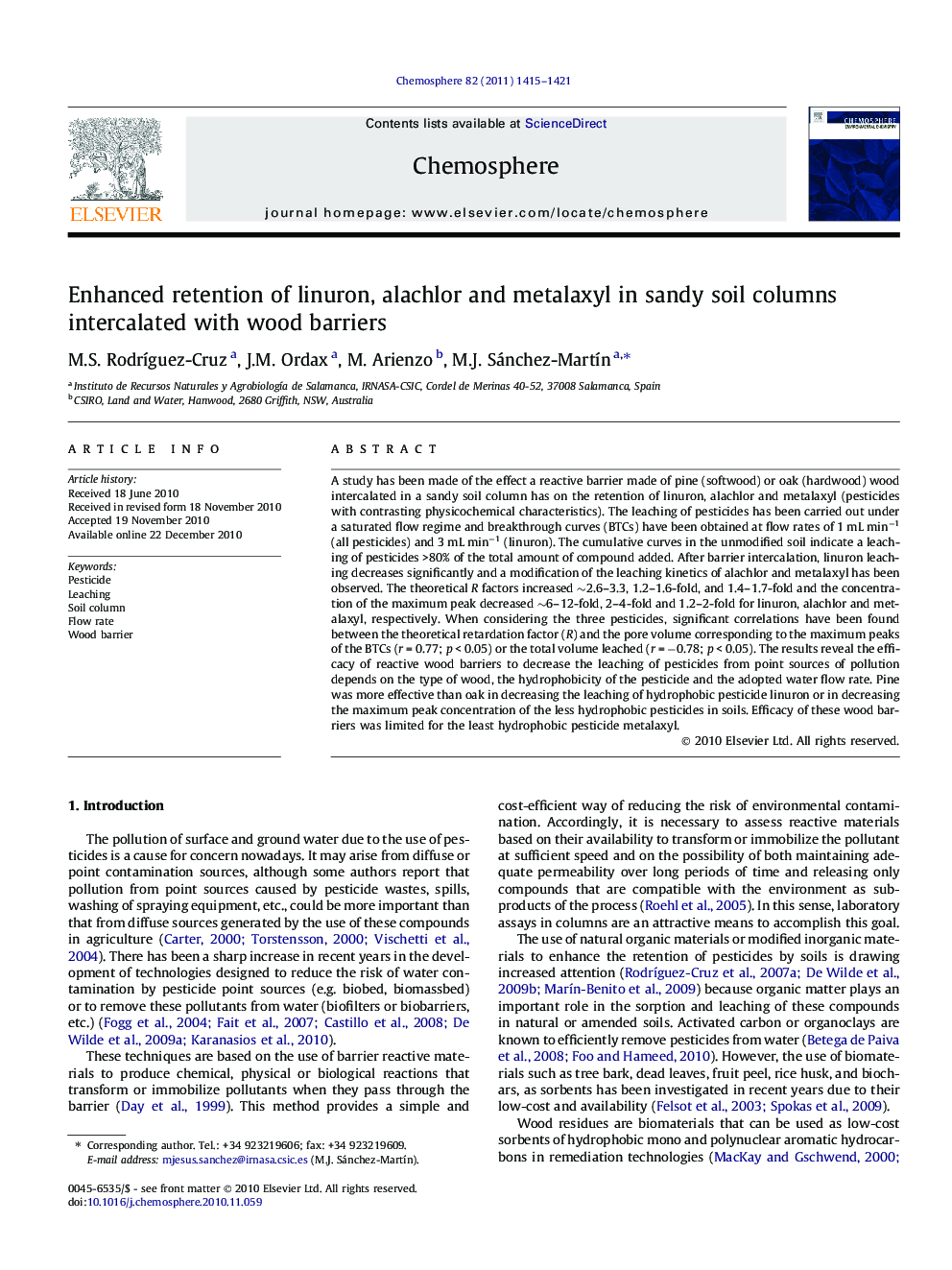| کد مقاله | کد نشریه | سال انتشار | مقاله انگلیسی | نسخه تمام متن |
|---|---|---|---|---|
| 4411348 | 1307590 | 2011 | 7 صفحه PDF | دانلود رایگان |

A study has been made of the effect a reactive barrier made of pine (softwood) or oak (hardwood) wood intercalated in a sandy soil column has on the retention of linuron, alachlor and metalaxyl (pesticides with contrasting physicochemical characteristics). The leaching of pesticides has been carried out under a saturated flow regime and breakthrough curves (BTCs) have been obtained at flow rates of 1 mL min−1 (all pesticides) and 3 mL min−1 (linuron). The cumulative curves in the unmodified soil indicate a leaching of pesticides >80% of the total amount of compound added. After barrier intercalation, linuron leaching decreases significantly and a modification of the leaching kinetics of alachlor and metalaxyl has been observed. The theoretical R factors increased ∼2.6–3.3, 1.2–1.6-fold, and 1.4–1.7-fold and the concentration of the maximum peak decreased ∼6–12-fold, 2–4-fold and 1.2–2-fold for linuron, alachlor and metalaxyl, respectively. When considering the three pesticides, significant correlations have been found between the theoretical retardation factor (R) and the pore volume corresponding to the maximum peaks of the BTCs (r = 0.77; p < 0.05) or the total volume leached (r = −0.78; p < 0.05). The results reveal the efficacy of reactive wood barriers to decrease the leaching of pesticides from point sources of pollution depends on the type of wood, the hydrophobicity of the pesticide and the adopted water flow rate. Pine was more effective than oak in decreasing the leaching of hydrophobic pesticide linuron or in decreasing the maximum peak concentration of the less hydrophobic pesticides in soils. Efficacy of these wood barriers was limited for the least hydrophobic pesticide metalaxyl.
Research highlights
► Effect of a wood reactive barrier on the retention of pesticides by a sandy soil.
► Barrier efficacy depends on wood type, pesticide hydrophobicity and water flow rate.
► Pine was more effective than oak for the hydrophobic pesticide linuron.
► Efficacy of barriers was not relevant for the least hydrophobic pesticide metalaxyl.
Journal: Chemosphere - Volume 82, Issue 10, March 2011, Pages 1415–1421